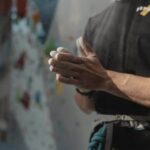This blog post will explain what skill-related fitness entails and its significance. It will discuss the different components of skill-related fitness, how they can benefit athletic performance and everyday life, and their relevance across different age groups.
Additionally, it will delve into skill-related fitness in the workplace, training methods to develop these skills, overcoming barriers, and the positive impact on mental well-being. By the end of the post, readers will have a comprehensive understanding of skill-related fitness and its potential advantages.
Skill-related fitness refers to the physical attributes that contribute to an individual’s ability to perform various motor skills effectively. This type of fitness involves a combination of agility, balance, coordination, power, reaction time, and speed. While many may associate fitness solely with cardiovascular endurance or muscular strength, skill-related fitness is equally important in improving overall athletic performance.
Whether you are an athlete looking to enhance your sports abilities or an individual seeking ways to improve daily activities, skill-related fitness can play a vital role in achieving optimal physical function. It not only enables individuals to execute movements with precision but also helps prevent injuries by promoting proper body mechanics and control.
Furthermore, skill-related fitness transcends age boundaries as it offers unique benefits for children, adults, and older adults alike. For children and adolescents, developing these skills can aid in motor development while enhancing confidence levels. Adults can enjoy improved performance in recreational activities or sport-specific disciplines by focusing on agility or reaction time training. Older adults can maintain independence by honing their coordination and balance skills which become increasingly important in preventing falls.
The Components of Skill-Related Fitness
Skill-related fitness encompasses various components that play a vital role in athletic performance and everyday activities. These components include agility, balance, coordination, power, reaction time, and speed. Understanding each of these components is key to developing a well-rounded fitness routine that can enhance overall physical abilities.
Agility is the ability to change direction quickly and efficiently while maintaining control of one’s body. It is essential in sports such as soccer, basketball, and tennis where rapid changes in movement direction are common. By practicing agility exercises and drills, individuals can improve their reaction time, coordination, and overall athletic performance.
Balance refers to the ability to maintain stability and control over the body’s position. It plays a significant role in activities such as yoga, ballet, and gymnastics. Good balance helps prevent falls and injuries by improving posture and stability. Balance training exercises like standing on one leg or using balance boards can enhance proprioception (the awareness of body position) and strengthen the muscles involved in maintaining stability.
Coordination involves the ability to synchronize movements smoothly and efficiently. It is crucial for sports like soccer, basketball, and baseball where multiple movements occur simultaneously. By improving coordination through specific exercises or sport-specific drills, athletes can enhance their precision, timing, and overall performance.
Power refers to the combination of strength and speed. It is essential for explosive movements like throwing a punch or jumping high during a basketball game. Power training typically involves exercises such as plyometrics (jump training) or Olympic lifting variations that focus on generating force quickly.
Reaction time refers to how quickly an individual can respond to a stimulus or situation. It is vital in sports like tennis or boxing where reacting fast can make all the difference between winning or losing. Reaction time can be improved through specific training exercises that involve quick decision-making or reacting to visual cues.
Speed is simply how quickly an individual can move from one point to another. Whether it’s sprinting down a track or chasing after a soccer ball, speed is crucial in many sports. Speed training incorporates exercises such as sprint intervals or resistance training to improve stride length and frequency.
Overall, these components of skill-related fitness are interconnected and complement each other. By incorporating exercises that target agility, balance, coordination, power, reaction time, and speed into a training routine, individuals can improve their performance in sports and physical activities while also preventing injuries.
Developing these skills is not limited to athletes but can benefit individuals of all ages and enhance their everyday lives. From children learning to move efficiently to older adults maintaining balance and coordination for fall prevention, skill-related fitness is essential for everyone.
How Skill-Related Fitness Can Improve Athletic Performance
Skill-related fitness plays a crucial role in enhancing athletic performance and directly impacting sports and physical activities. By developing the components of skill-related fitness, individuals can improve their abilities in various sports and physical pursuits.
Agility is an important component of skill-related fitness that allows individuals to change direction quickly and efficiently. It is particularly beneficial in sports such as soccer, basketball, and tennis, where quick changes in movement direction are required. Developing agility can help athletes react faster to opponents’ moves and perform better overall.
Balance is another essential aspect of skill-related fitness that contributes to improved athletic performance. Having good balance helps athletes maintain stability while performing dynamic movements or when faced with external forces. In sports like gymnastics, surfing, and snowboarding, balance is vital for executing complex maneuvers with precision.
Coordination refers to the ability to synchronize different parts of the body to perform specific movements effectively. Skilled coordination is essential in activities like dancing, boxing, and playing instruments. Athletes who possess excellent coordination can execute complex movement patterns more efficiently, leading to better performance.
Power is an essential component of skill-related fitness that allows athletes to exert maximum force over a short period. It is crucial in sports such as weightlifting, sprinting, and throwing events. Power enables athletes to generate quick bursts of energy required for explosive movements like jumping high or throwing with force.
Reaction time refers to the ability to respond quickly to stimuli or cues from the environment. This component plays a significant role in sports that require rapid decision-making, such as basketball, baseball, and martial arts. Improving reaction time can help athletes anticipate their opponents’ actions faster and make split-second decisions on their own movements.
Speed is another critical element of skill-related fitness that can greatly impact athletic performance. It relates to how quickly an individual can move from one point to another or perform repetitions within a specific time frame. Speed is highly valued in sports like track and field events, football, and swimming. Enhancing speed allows athletes to cover more ground quickly or outpace their opponents.
By understanding and improving these components of skill-related fitness, athletes can elevate their performance levels in specific sports and physical activities. Incorporating targeted exercises, drills, and training programs that focus on agility, balance, coordination, power, reaction time, and speed can significantly enhance an athlete’s overall abilities.
Skill-Related Fitness for Everyday Life
Skill-related fitness is not only essential for improving athletic performance but also for enhancing daily activities and preventing injuries in our everyday lives. The components of skill-related fitness, including agility, balance, coordination, power, reaction time, and speed, play a crucial role in ensuring smooth functioning and efficient movement in various tasks.
Agility, for instance, is the ability to change direction quickly and maintain control while doing so. This skill is beneficial when navigating crowded spaces or participating in activities that require quick movements such as playing certain sports or even avoiding obstacles while walking or running.
Balance is another key component that aids in preventing falls and maintaining stability during activities like walking on uneven surfaces or carrying objects while moving. Good balance allows individuals to maintain proper posture and reduces the risk of injuries caused by tripping or losing stability.
Coordination is essential for executing precise movements and actions. It involves the smooth synchronization of different body parts to complete tasks effectively and efficiently. Coordination contributes to everyday activities such as cooking, driving, typing on a keyboard, playing musical instruments, and many more.
Power refers to the ability to exert maximum force in minimal time. Having adequate power helps individuals perform tasks that require strength quickly and effectively. For example, opening a heavy door with force or lifting heavy objects without straining oneself can be easier if one has developed power through skill-related fitness training.
Reaction time plays a crucial role in responding swiftly to different stimuli. Whether it’s reacting to unexpected situations on the road while driving or catching an object before it falls from a shelf, having improved reaction time enhances overall efficiency and safety in daily life.
Speed is an important skill-related fitness component that allows individuals to move rapidly over short distances. It facilitates completing tasks more efficiently within limited time frames. Improved speed can benefit activities like running errands, catching public transportation on time, or enjoying recreational activities that involve fast-paced movements.
By incorporating skill-related fitness into our everyday lives through targeted training methods and exercises, we can enhance our ability to perform daily activities with greater ease, efficiency, and safety. By improving agility, balance, coordination, power, reaction time, and speed, individuals can reduce the risk of injuries and enhance their overall quality of life.
Whether it’s performing household chores, engaging in recreational activities or simply navigating through daily routines, skill-related fitness skills are valuable assets that can greatly improve our day-to-day experiences.
The Importance of Skill-Related Fitness in Different Age Groups
Skill-related fitness is not only important in the realm of sports and athletic performance but also plays a crucial role in different age groups. It provides numerous benefits to children, adults, and older adults alike. By focusing on and developing the components of skill-related fitness, individuals of all ages can enhance their daily activities, prevent injuries, and improve overall physical well-being.
Benefits for Children
Skill-related fitness is particularly valuable for children as it aids in their overall growth and development. The components of skill-related fitness, such as agility, coordination, and balance, help children improve their motor skills and body control. Engaging in physical activities that focus on these skills can also boost cognitive function and concentration levels. Moreover, skill-related fitness improves the likelihood of children participating in sports and other physical activities with confidence.
Benefits for Adults
For adults, skill-related fitness is essential for maintaining an active lifestyle and preventing injury. The components of agility, power, and speed are especially crucial as they allow individuals to perform daily tasks more efficiently. Having good reaction time can help prevent accidents or falls by enabling individuals to respond quickly to unexpected situations. Additionally, skill-related fitness enhances athletic performance at higher intensities and allows adults to engage in competitive sports or recreational activities more effectively.
Benefits for Older Adults
In older adults, skill-related fitness becomes even more vital for maintaining independence and a high quality of life. Building strength through power exercises helps improve mobility and prevents muscle loss associated with aging. Balance exercises reduce the risk of falling while coordination drills enhance motor skills that may deteriorate over time. Skill-related fitness also encourages social interaction among older adults through participation in group exercise classes or recreational activities tailored to their abilities.
By recognizing the significance of skill-related fitness across different age groups, individuals can prioritize its development in order to live healthier lives. Whether it be enhancing motor skills in children, improving athletic performance in adults, or preventing age-related decline in older adults, skill-related fitness offers a wide range of benefits that contribute to overall physical well-being.
Skill-Related Fitness in the Workplace
In today’s fast-paced and competitive work environment, individuals are constantly seeking ways to enhance their job performance and productivity. One often overlooked area that can significantly contribute to professional success is skill-related fitness. Skill-related fitness refers to the development of physical abilities that can directly impact job performance and productivity in the workplace.
One component of skill-related fitness that is particularly relevant in the workplace is agility. Agility involves the ability to quickly change direction, react, and adjust movements. In a work setting, being agile allows individuals to adapt to changing circumstances, make critical decisions efficiently, and navigate through challenging situations with ease. For example, an employee who possesses excellent agility may be able to switch between tasks seamlessly or respond swiftly to unexpected changes in a project.
Another important component of skill-related fitness that is beneficial in the workplace is coordination. Coordination encompasses the ability to synchronize different parts of the body or different body systems efficiently. Having good coordination skills can enhance one’s ability to multitask effectively, communicate clearly with colleagues and clients, and perform complex tasks accurately. For instance, a sales representative with superior coordination skills may excel at managing multiple client relationships simultaneously while delivering exceptional service.
Power is another valuable aspect of skill-related fitness that can positively impact job performance. Power refers to the combination of strength and speed and relates specifically to explosive force production. In a professional setting, power can assist in lifting heavy objects or equipment, performing physically demanding tasks more efficiently, and even displaying confidence during presentations or public speaking engagements.
Training Methods to Develop Skill-Related Fitness
When it comes to developing skill-related fitness, there are various training methods that can be utilized. These methods involve a combination of exercises, drills, and training programs designed to enhance agility, balance, coordination, power, reaction time, and speed. Each of these components plays a crucial role in improving athletic performance and overall physical abilities.
One effective training method for developing skill-related fitness is through specific exercises targeting each component. For example, agility ladder drills can improve agility and quickness by challenging individuals to move their feet quickly in response to different patterns. Balance exercises such as single-leg stands or standing on unstable surfaces can enhance stability and proprioception.
Another training method involves incorporating sport-specific drills into the training regimen. These drills mimic movements and scenarios that athletes will encounter during their sports or physical activities. For instance, basketball players can benefit from practicing dribbling drills that require quick changes in direction and hand-eye coordination.
In addition to exercises and sport-specific drills, structured training programs are also essential for developing skill-related fitness. These programs provide a systematic approach to improving performance by progressively challenging the body’s capabilities over time. They often include a combination of different exercises targeting each component of skill-related fitness and are designed based on individual goals and needs.
By utilizing various exercises, drills, and training programs catered towards skill-related fitness components, individuals can optimize their athletic performance and overall physical abilities. These methods not only promote growth in specific skills but also help individuals develop a well-rounded foundation of fitness that can be applied across different sports or physical activities. It is important to consult with a qualified trainer or coach when implementing these methods to ensure safety and effectiveness.
| Training Methods | Component |
|---|---|
| Agility ladder drills | Agility, quickness |
| Single-leg stands | Balance, stability, proprioception |
| Dribbling drills | Coordination, reaction time, hand-eye coordination |
| Structured training programs | All skill-related fitness components |
Overcoming Barriers to Skill-Related Fitness
While skill-related fitness can offer numerous benefits, there are often barriers that individuals face when trying to develop and improve these skills. Identifying and addressing these challenges is essential to ensure success in achieving skill-related fitness goals. This section will explore some common barriers and provide strategies to overcome them.
One common barrier to skill-related fitness is a lack of time. Many individuals lead busy lives with demanding schedules, making it difficult to find the time for regular exercise and skill development. To overcome this challenge, it is important to prioritize physical activity and incorporate it into a daily routine. Scheduling specific times for workouts or skill practice can help make it a priority and increase the likelihood of consistency.
Another barrier is a lack of access to resources or equipment. Some individuals may not have access to a gym or training facility that offers the necessary equipment for certain skill-related activities. In such cases, it is important to be creative and find alternative ways to exercise or practice skills. For example, if agility training requires cones or hurdles but they are not available, household objects like water bottles or rolled-up towels can be used as makeshift markers.
A lack of motivation or boredom can also be significant barriers when trying to develop skill-related fitness. It is crucial to find activities that are enjoyable and engaging in order to maintain motivation over time. This could involve participating in group classes or team sports, trying out new exercises or drills regularly, or setting goals and tracking progress. Additionally, seeking support from friends, family, or a workout buddy can provide accountability and help keep motivation levels high.
By addressing common barriers such as time constraints, limited resources/equipment availability, and lack of motivation/boredom head-on, individuals can overcome these challenges on their journey towards improving their skill-related fitness. Implementing strategies like time management techniques, creativity in finding alternatives for resources or equipment, and actively seeking out activities or support systems that increase motivation can lead to a more successful and rewarding skill-related fitness experience.
Skill-Related Fitness and Mental Well-Being
Enhancing skill-related fitness not only has physical benefits but also brings about significant psychological advantages. By improving agility, balance, coordination, power, reaction time, and speed – the key components of skill-related fitness – individuals can experience a boost in their mental well-being and build self-confidence.
One of the primary psychological benefits of developing skill-related fitness is improved self-esteem. As individuals become more proficient in their athletic abilities and daily activities, they gain a sense of accomplishment and pride. This newfound confidence extends beyond physical skills and spills over into other aspects of life, leading to increased self-assurance in various situations.
Furthermore, enhancing skill-related fitness can positively impact mental health by reducing stress levels. Engaging in physical activities that require agility, coordination, and reaction time helps to release endorphins which act as natural mood boosters. Regular exercise has been shown to decrease symptoms of anxiety and depression while promoting overall emotional well-being.
In addition to elevating self-esteem and reducing stress, building skill-related fitness can enhance concentration and focus. The cognitive demands associated with mastering these skills demand mental presence and attentiveness. As individuals train and challenge themselves physically, they improve their ability to stay focused on tasks for extended periods both inside and outside the athletic field.
Overall, improving skill-related fitness has profound psychological benefits that extend beyond physical performance. Increased self-esteem, reduced stress levels, improved concentration are just some of the positive aspects individuals can experience by incorporating skill development into their exercise routine or everyday activities. By prioritizing skill-related fitness alongside other aspects of wellness, individuals can enhance both their physical abilities and mental well-being.
Conclusion
In conclusion, skill-related fitness plays a vital role in various aspects of life. It encompasses agility, balance, coordination, power, reaction time, and speed, all of which are essential components for athletic performance and everyday activities. By incorporating skill-related fitness into their routine, individuals can improve their abilities in sports and physical activities, enhancing their overall performance and preventing injuries.
Furthermore, skill-related fitness is not limited to athletes or those engaged in rigorous physical activities. It benefits individuals of all age groups. For children, it helps in the development of motor skills and improves their ability to participate in different sports and recreational activities. Adults can use skill-related fitness to maintain a healthy lifestyle and increase their productivity at work by applying these skills to tasks that require coordination and balance.
Moreover, skill-related fitness has a direct impact on mental well-being. Building these skills enhances self-confidence and provides a sense of accomplishment when goals are achieved. It also promotes focus and concentration while improving cognitive abilities such as reaction time. Overall, skill-related fitness has the potential to positively influence various aspects of life by improving physical performance and mental well-being.
Frequently Asked Questions
Can Others Benefit From Skill Related Fitness Why?
Yes, others can definitely benefit from skill-related fitness. Skill-related fitness refers to the abilities and qualities that are necessary for performing certain physical activities effectively and efficiently. These skills include agility, coordination, balance, power, reaction time, and speed. By improving these skills through regular exercise and training, individuals can enhance their performance in various sports and physical activities.
This not only helps them to excel in their chosen activity but also improves overall fitness levels and reduces the risk of injuries. Additionally, skill-related fitness can also have transferable benefits to everyday life, such as improved coordination and balance for injury prevention or better reaction time for avoiding accidents. Therefore, skill-related fitness is not only beneficial for athletes or individuals involved in specific sports but can bring advantages to anyone looking to improve their physical capabilities.

Passionate about providing useful information to anyone with an interest in the field of Personal Training, I strive to pass on to our readers quality information and to answer any questions about Personal Trainers, the work they do and how to become one.





